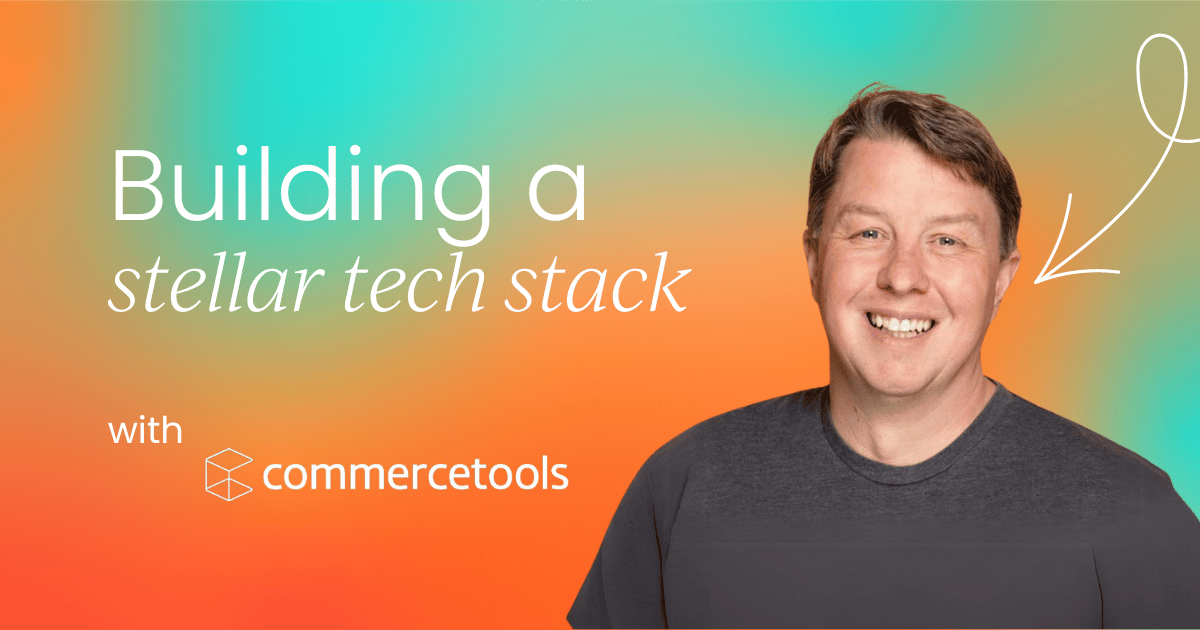These days your sales enablement strategy has to be just as innovative as your product or you risk being left behind.
I'm Chris Book, and I lead the sales enablement function at commercetools. We're in the business of helping big enterprises sell online, providing the infrastructure they need when off-the-shelf solutions won't cut it and Shopify is too small. This makes our approach to sales enablement particularly interesting – if I do say so myself!
So in this article, I'll share our formula for sales enablement success – from our core philosophy and tech stack to our onboarding program and continuous enablement strategies.
Whether you're a seasoned enablement professional or just getting started, I hope my experiences and observations from a decade in the field will give you some fresh perspectives on leveraging technology for sales success.
Let’s dive right in!
Breaking down our tech stack
Let me walk you through the technology that powers our sales enablement. At the core, we have our content creation workflow. Our instructional designers use Articulate Rise to create engaging, self-paced content. This then gets published into what I call our CMS (content management system) – and yes, I deliberately say CMS rather than LMS (learning management system).
Here's why: I've noticed over the years that the value of traditional learning management systems has been declining. When you're building content outside the LMS using new tools like Articulate Rise, the whole concept of a formal LMS starts to feel a bit outdated!
We use Showpad as our content management system, which hosts both internal and external content. Everything is integrated bi-directionally with our CRM – and yes, you might be surprised to learn we use this up-and-coming technology called Salesforce (I'm kidding, of course). This integration is crucial though because it means our sellers can access everything they need right where they work.
Now, let's talk about what I call the "residual 20%" – those seemingly low-level, repetitive activities that actually make a huge difference. In our case, it's the Google Workspace tools.
We're a Google house, and we spend a significant amount of time in these tools. It might seem basic, but being proficient in Google Meet for running remote sessions, utilizing breakout rooms, and managing Q&As effectively instead of letting the chat run wild – all of this matters enormously in a remote-first world.
Speaking of remote-first, Slack is absolutely crucial for us – it's the heartbeat of our company. We've created some really active communities there. For instance, we have a channel called "competition", integrated with a tool called Klue. It's constantly buzzing with sellers sharing competitive intel, and the threads underneath are gold mines of information.
We even created another channel called "pain" where we incentivize sellers with Amazon vouchers to share snippets where customers talk about specific pain points. The real magic happens in the conversation threads where our team discusses how we solve these pains.
Our onboarding and enablement strategies
Onboarding new salespeople – a crucial element of the sales enablement role – and a process where an effective tech stack comes in very handy!
We use Showpad as our content repository, but here's the key – we have a loose, not strict, monitoring approach. We're not the type to say, "It's week four, and you're only at week 2.7 of the content!" That just doesn't reflect the real world of sales.
Instead, we tell our new hires, "In week five, we're going to ask you to do some specific things. Here's all the material we've prepared for you. If you're the type who likes to studiously go through everything with a notebook, fantastic! If you're more of a wing-it person... well, good luck!"
Gong has been a game-changer for onboarding. We give new hires access to a curated library of calls from our best sellers. In fact, one of the first things we teach them is how to find the gold dust in all those calls – how to filter for things like discovery calls for closed-won deals over a million dollars in the fashion retail sector.
But onboarding is just the beginning. For ongoing enablement, we have several regular sessions:
- The Tool Shed (yes, commercetools... Tool Shed... we thought it was clever): This is a biweekly, internally focused session with subject matter experts. It's not mandatory, but we do track attendance. If someone's struggling to hit their numbers and hasn't attended a Tool Shed in six months... well, you can probably see the correlation.
- Partner Power Hour: In the alternating weeks, we focus on partner content. Our business has a huge amount of partner attachment, and this helps us manage the demand from partners wanting to influence our sales team.
- GTM Newsroom: Once a month, we run what's essentially a news program – fast updates starting with our CRO, moving to RevOps, always including marketing. We try to keep it engaging and fast-paced.
We also do ad hoc certifications. We recently ran one called "Disco Inferno" for discovery calls, and now we're doing "Pitch Perfect." (Yes, we need to come up with a third musical reference – this is why I'm in enablement, not marketing!)
Deep dive: How we use key platforms
Showpad
Our approach to Showpad is all about ease of discovery. We've organized everything into intuitive blocks – product, partner, and competitor information (that's where Klue comes in).
But we're not just throwing everything in there. We're actually quite strict about what makes the cut. We work closely with our customer marketing, content marketing, and product marketing teams to ensure everything in Showpad serves a purpose.
The most engaging part? It's how our sellers share content with prospects and customers. This is where the platform really shines, turning from a simple content repository into a powerful sales tool.
Gong
You know, if I think back to when I started in enablement about ten years ago, Gong – or conversational intelligence in general – is hands down the single biggest technology game-changer we've seen. It started simple with call recording, but what it can do now is mind-blowing.
Let me give you a few examples of how we use it:
- Collaboration: We use it for seamless handovers between BDRs and AEs. Our pre-sales engineers and even the product team jump in on technically complex deals. The ability to actually hear what was said, rather than relying on someone's notes or memory, is invaluable.
- Deal inspection: Being able to go in and see what was actually said in a call – game changer. And now that we're using Gong Forecast (if you haven't checked this out yet, you really should), everything is aligned. When somebody commits to a number, you can see the actual deals within that commit, and Gong will tell you whether it thinks the deal is likely to close or not.
- AI playbooks: This is where it gets really exciting. We use the MEDDPICC sales methodology (not as highly adopted as we'd like) and Command of the Message in our sales process. We're building out AI playbooks in Gong to listen to what customers say and write in their emails to show whether there's evidence for each element of MEDDPICC.
- Imagine a deal dashboard showing MEDDPICC across the top, with green, amber, or red for each element. Click through, and you get to the actual evidence from calls or emails. This is what I mean about keeping enablement as close as possible to the real world of selling.
We're also using Camtasia for video editing when needed, and of course, I can't not mention ChatGPT. We're already using it to help create content, and I'm excited to see how that evolves.
The key with all these tools is that they're not just shiny toys – they're carefully chosen and implemented to support our core philosophy of keeping everything as close to the real world of selling as possible.
When technology serves that purpose, that's when you see real impact on sales success.
Conclusion
At the end of the day, our approach to sales enablement tech is all about making it as close to the real world of selling as possible.
Whether it's using Gong to learn from top performers, leveraging Showpad for just-in-time content delivery, or using AI to analyze deal health, everything ties back to that core philosophy.
The tech stack is important, but it's how you use it that really matters. For us, it's about creating an environment where our salespeople can learn, grow, and succeed in the most natural way possible – by staying close to the reality of their day-to-day work.
This article comes from Chris Book’s insightful talk at our 2023 London Sales Enablement Summit, check out his full presentation here.


Sales enablement insider
Thank you for subscribing
Level up your sales enablement career & network with sales enablement experts
An email has been successfully sent to confirm your subscription.
 Follow us on LinkedIn
Follow us on LinkedIn


.png)






